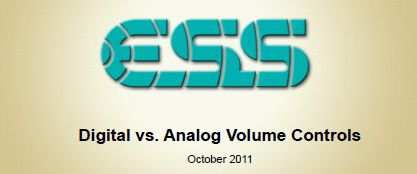D
Deleted member 58865
Guest
DAC means digital to analog converter. Reducing DAC volume can mean reducing voltage level instead of meddling with digital bits before bits are converted to analog signals.
Because DAC produces analog signals, it just needs to produce weaker analog signals instead of meddling with digital bits if DAC volume is reduced.
Reducing application volume reduces bit-depth of digital audio data. Thus, it is a good idea to use 24bit or 32bit audio sampling format in operating system.
Because DAC produces analog signals, it just needs to produce weaker analog signals instead of meddling with digital bits if DAC volume is reduced.
Reducing application volume reduces bit-depth of digital audio data. Thus, it is a good idea to use 24bit or 32bit audio sampling format in operating system.

